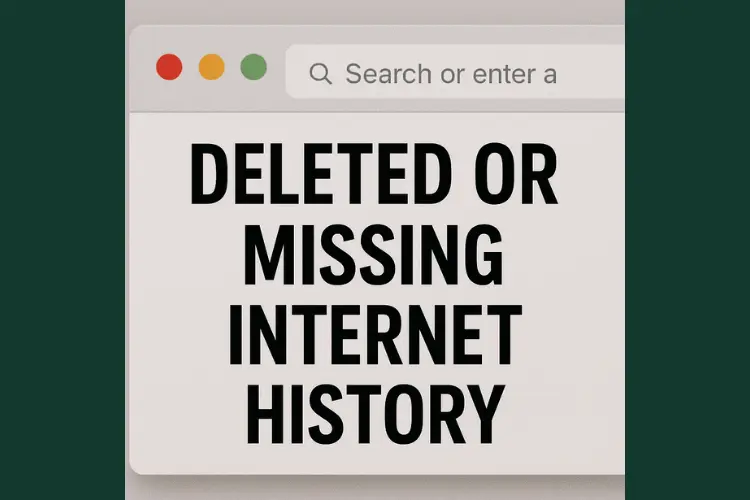Introduction
The internet has completely reshaped how teenagers grow up. It’s a space for learning, socializing, and entertainment, but it also exposes them to risks—one of the biggest being pornography. Research shows that by age fifteen, many teenagers have already encountered explicit material online. Parents may assume their child is “too good” or “too young” for this, but today’s digital reality proves otherwise. Pornography is no longer something teens must search for; it often appears unexpectedly through ads, links, or social media. So, how can you tell if your teen might be hiding this habit? There are behavioral signs that parents should not ignore. In this blog, we’ll explore three warning signals and give you practical strategies to handle them with care.1. A Sudden Need for Privacy with Devices
Teens naturally crave more independence as they grow, but a sudden or unusual demand for privacy around phones, tablets, or computers can be concerning. Explicit content is rarely consumed openly—it thrives in hidden spaces.
Possible Warning Signs:
- Spending long hours alone with a phone or laptop.
- Quickly closing tabs or screens when someone enters the room.
- Getting irritated when asked about online habits.
- Ignoring established family tech rules.
If your teen insists on using devices privately and resists oversight, it could indicate exposure to pornography.
What Parents Can Do:
- Keep shared computers in open areas like the living room.
- Set boundaries about screen use when adults are away.
- Create family charging spots outside bedrooms.
Healthy boundaries protect teens without removing all their independence.
2. Loss of Interest in Hobbies, Friends, or School
Another red flag is when a teenager withdraws from activities they once enjoyed. Everyone goes through phases, but a complete loss of motivation may be tied to something deeper. Pornography can overstimulate the brain’s reward pathways, making real-life achievements feel less rewarding.
Changes You Might Notice:
- Falling grades or skipped homework.
- Dropping out of sports, clubs, or creative activities.
- Avoiding social gatherings or isolating themselves.
- Spending long hours online without explanation.
If your teen loses interest in school, hobbies, or social life, it could signal pornography use—or even underlying depression.
How Parents Can Help:
- Ask gentle, open-ended questions about the loss of interest.
- Encourage activities that build real-world confidence.
- Prioritize family meals or outings to strengthen bonds.
- Offer understanding rather than criticism.
This approach allows parents to uncover what’s really going on without pushing teens further into secrecy.
3. Deleted or Missing Internet History
A blank or shortened browser history is another common warning sign. Teens today are skilled at using private browsing modes or clearing histories to hide activity. If you notice consistent gaps in internet records, it’s worth investigating.
Signs of Hidden Browsing:
- Browser history is always empty.
- Frequent use of incognito or private mode.
- New apps or alternative browsers appear unexpectedly.
- Refusal to let parents review devices.
If your teen’s browsing history is often deleted, it may mean they are hiding explicit online behavior.
What Parents Can Do:
- Make a family rule that only parents clear browsing data.
- Consider parental monitoring tools that record activity.
- Have open discussions about why online transparency matters.
Monitoring should not feel like spying. Instead, it should be explained as a step to ensure digital safety and mutual trust.
Why Honest Conversations Are More Powerful Than Rules
While filters and boundaries help, communication is the most important tool parents have. Many parents believe their teen would “never” look at pornography, but that assumption often leaves kids unprepared. Exposure is not just for “bad kids.” It can happen to anyone.
The best way to know if your teen has viewed pornography is to ask directly, in a supportive and non-judgmental way.
How to Build Openness:
- Start with calm, respectful questions.
- Share age-appropriate facts about how pornography affects the brain and relationships.
- Normalize curiosity but explain healthy boundaries.
- Let your teen know they can come to you anytime for support.
When parents show empathy, teens feel safer discussing difficult topics and asking for help.
Conclusion
In today’s digital world, pornography can reach teens more easily than ever before. Parents should watch for three main warning signs: a sudden need for tech privacy, withdrawal from hobbies and school, and deleted browsing history.
But spotting these signals is only the first step. The real solution comes from building open dialogue, setting healthy boundaries, and showing support instead of shame. Teens need parents who guide them with patience, not control.
For families who want extra protection, tools like CleanRouter can help filter harmful content and track browsing, even if history is deleted. Combined with honest communication, these tools give parents peace of mind while teaching teens responsibility.
Protecting your teen is about more than stopping harmful behavior—it’s about creating trust, safety, and open communication that lasts a lifetime.





